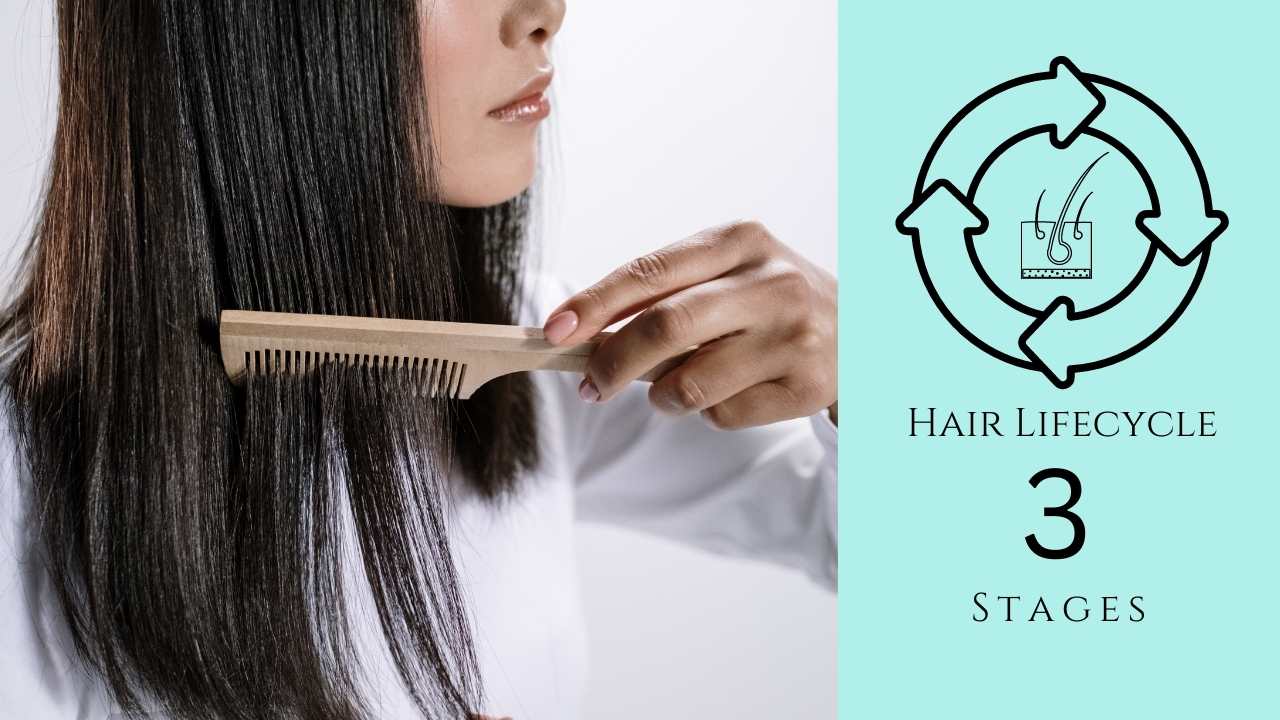Hair Life Cycle: 3 Stages & Relation Between Growth Phases & Hair Fall
By Dr. Janani Palanivel on 15-09-2022

Hair Formation
Hair plays a major role in the appearance of both men and women. Men and women who have long, shiny hair are considered good looking. People want their hair to be shiny and long. When hair starts to fall, people worry and stress. Hair falls can cause stress and depression in many people.
Hair is made up of a protein called keratin. Keratin is the protein that makes up nails too. Hair follicles are formed around when a fetus is 22 weeks old. A 22-week-old fetus will have around 5 million hair follicles. In that, around 1 million will be on the head. As humans grow, the density of hair reduces because the scalp widens.
Humans develop hairs all over the body. The sole of a foot and palms are the only place where hair doesn’t grow. Hair grows wherever the skin has pores.
Hair Life Cycle
Like everything else in the world, hair also has a life cycle. The life cycle of a hair starts when the hair is formed and ends when it sheds. For hair to fall, you don’t need to have a condition. Humans will naturally shed hair. You do not need to worry about shedding hair. Hair will be shed when you shower and comb. But if you feel like you are losing more hair than the normal amount, visit a skin doctor.
The hair life cycle has three stages. Form the formation of hair till it sheds; it can be divided into three stages. The three stages of the hair life cycle are:
- Anagen
- Catagen
- Telogen
Anagen
Anagen is the first stage of the hair life cycle. It can be said as the growing phase of hair. The hair starts to grow in the anagen stage of the hair life cycle. In the anagen phase, the cells in the root of the hair will be active, so more new hairs will be formed in that phase. This anagen phase will last for about five years. At any given time, it is estimated that 85% of the hair will be in a growing phase.
Catagen
In the catagen phase, the hair enters a short transitional phase. In that phase, blood supply and cells in the root will be cut off from the hair. This is the end of the active phase. On an average 1 % of the hair follicles will be in a catagen phase.
Telogen
Telogen is the final phase of the hair life cycle also known as the resting phase. During this phase, hair will not actively grow. At any given time, around 10 to 15% of hair will be in the telogen phase.
The Hair Fall Phase (exogen phase)
The end of the telogen phase, the hair will start to fall out. This phase is known as exogen. In the exogen phase, the hair will fall out, and it paves the way for new hairs. The whole process will repeat again after the end of the exogen phase. It is estimated that a hair fall of 100 to 150 is normal during a day in exogen phase.
Relationship Between Hair Fall and Growth Phase
The relationship between hair fall and hair regrowth differs in childhood, during puberty and in adulthood. Factors such as hormones, food, stress and environmental factors all play a vital role in maintaining the balance between hair fall and hair growth. There are various pathological conditions during which the hair growth cycle can get altered and results in increased shedding and decreased hair regrowth.
Early recognition of such conditions, administering appropriate medications will help in healthy hair restoration.
Visit a skin doctor to know more about the hair life cycle. Learning more about hair can give you a better understanding of hair falls and how to prevent them.